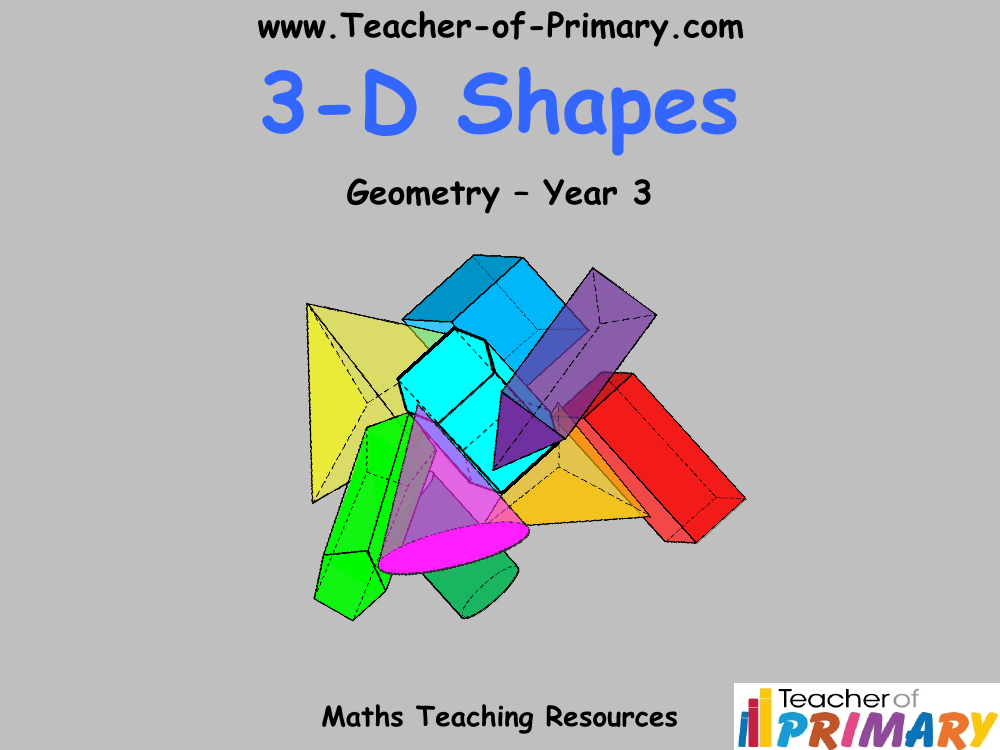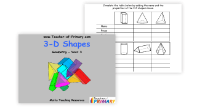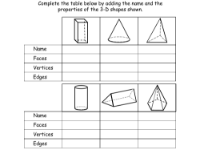3D Shapes - PowerPoint

Maths Resource Description
In a Year 3 geometry lesson, students will delve into the world of 3-D shapes, learning how to identify, describe, and construct these solid figures. The session begins by explaining that 3-D shapes are three-dimensional, possessing length, width, and thickness, unlike their 2-D counterparts that lack thickness. Students will then be introduced to various 3-D shapes such as cuboids, cubes, spheres, cones, cylinders, pyramids, and prisms. Each shape is described by its properties: faces (sides), vertices (corners), and edges (where two faces meet). For example, a cube has 6 faces, 8 vertices, and 12 edges, while a sphere has no edges or vertices, and a cone has a flat circular base with a vertex at the top.
The lesson continues by exploring the concept of nets, which are flat 2-D shapes that can be folded to create 3-D models. Students are encouraged to cut out and fold nets to understand how they transform into 3-D shapes. They will be asked to match nets with their corresponding 3-D shapes and list the properties of different shapes, such as the number of faces, vertices, and edges. This hands-on approach helps students visualise and comprehend the structure of 3-D objects, enhancing their spatial awareness and ability to recognise shapes in their environment.


